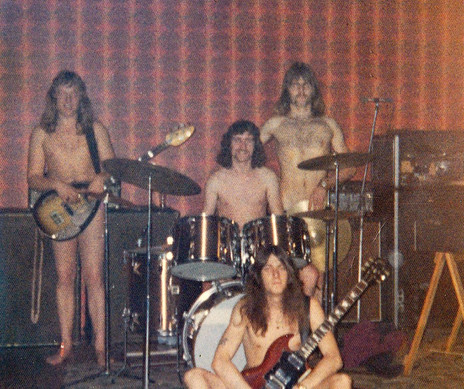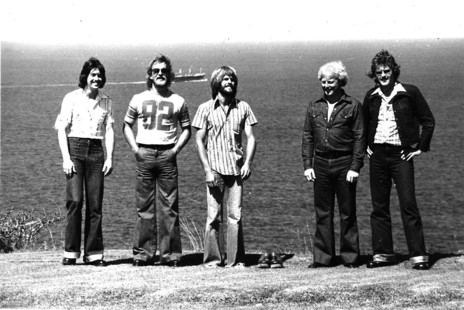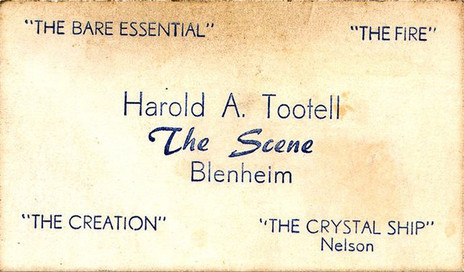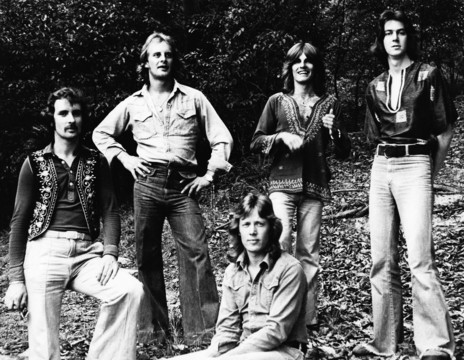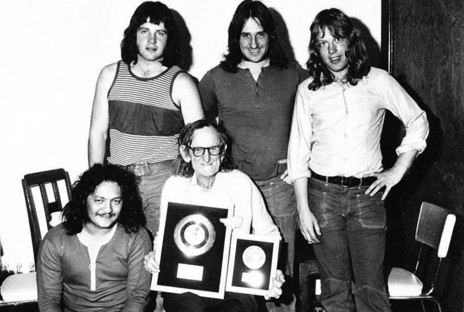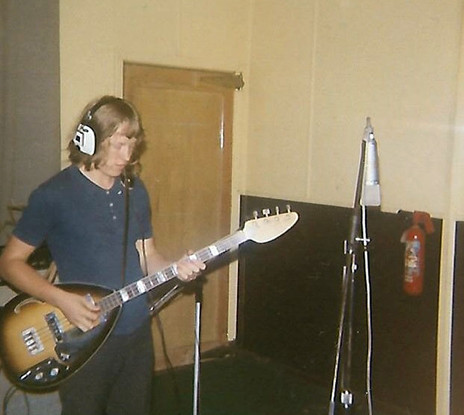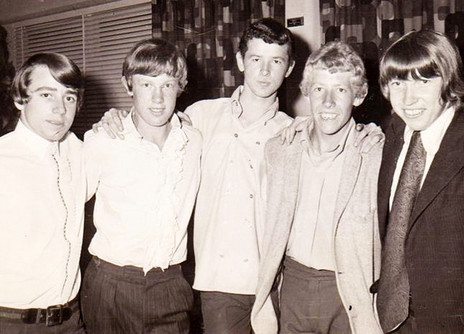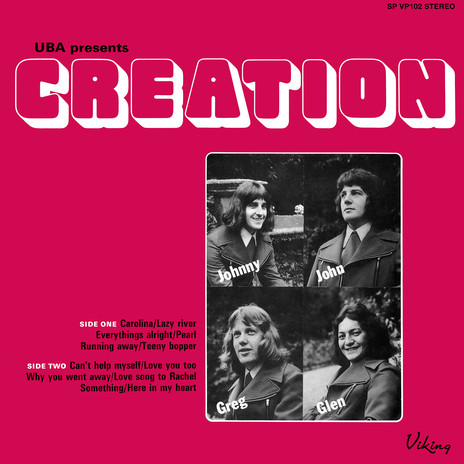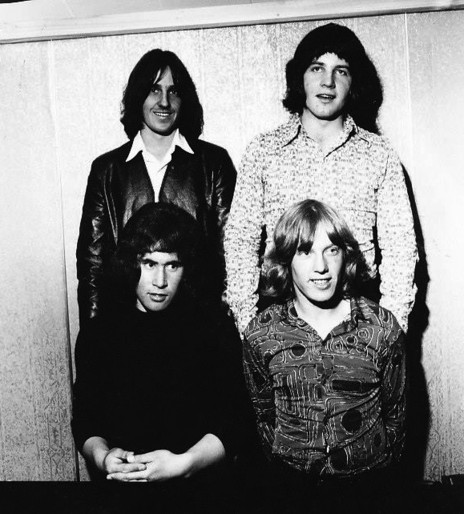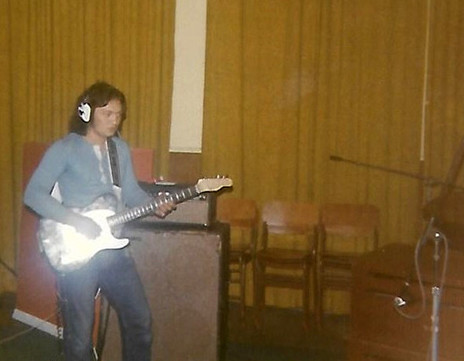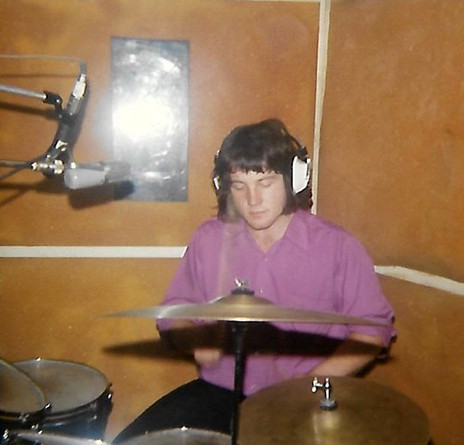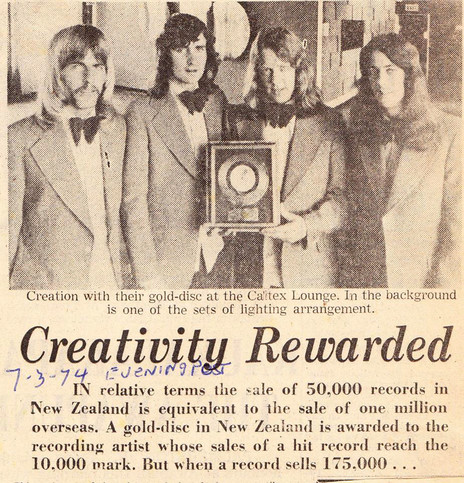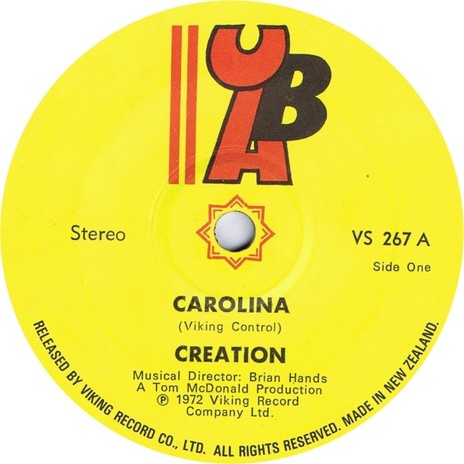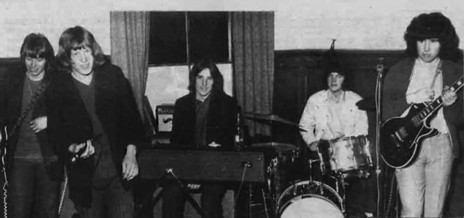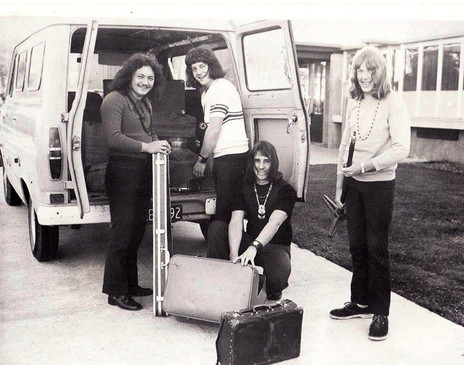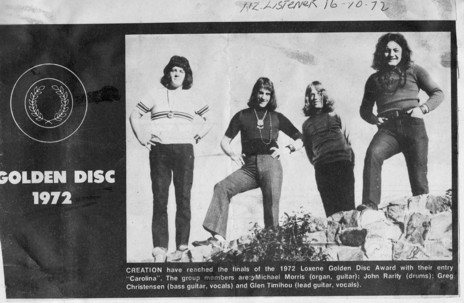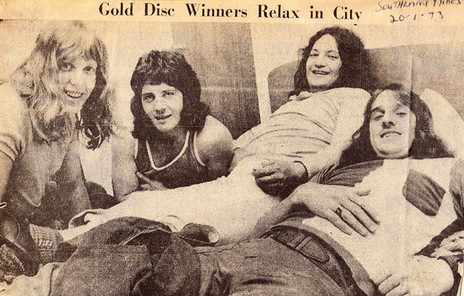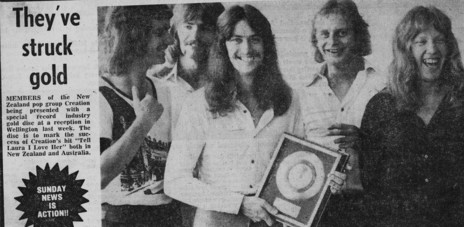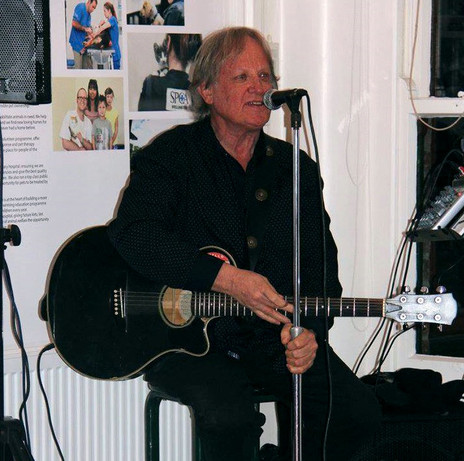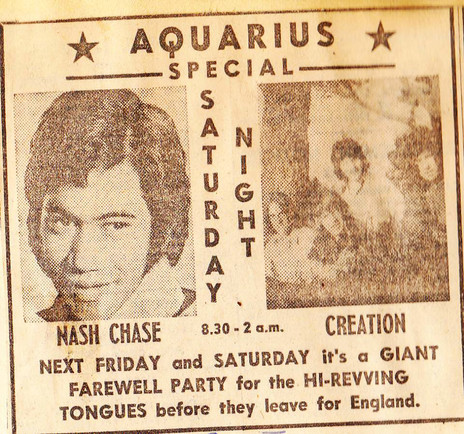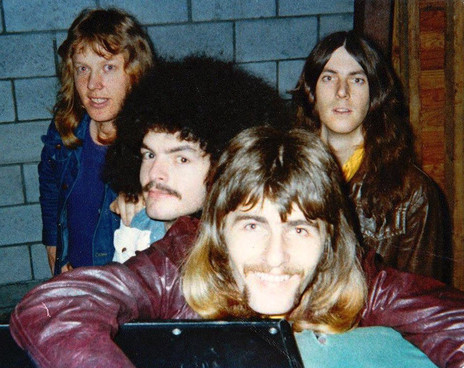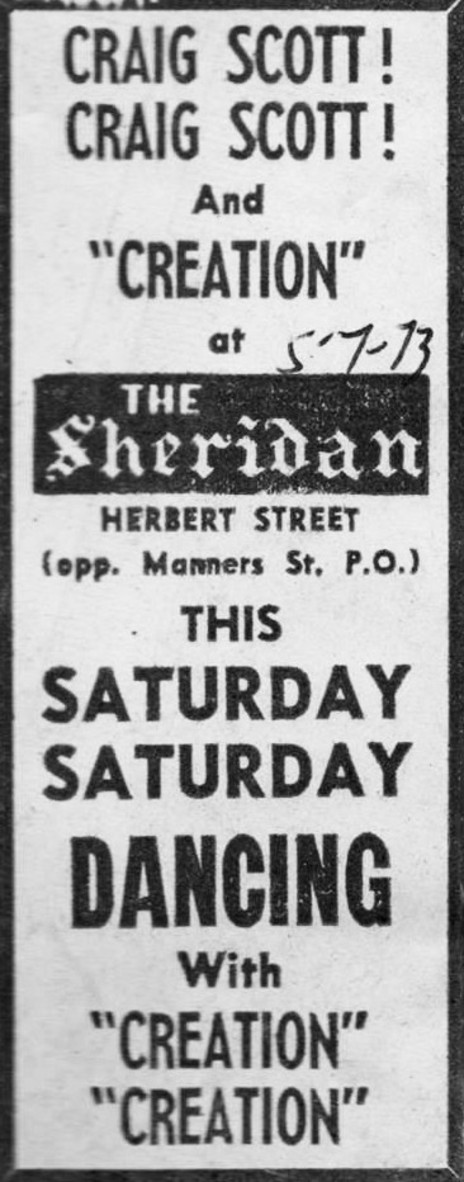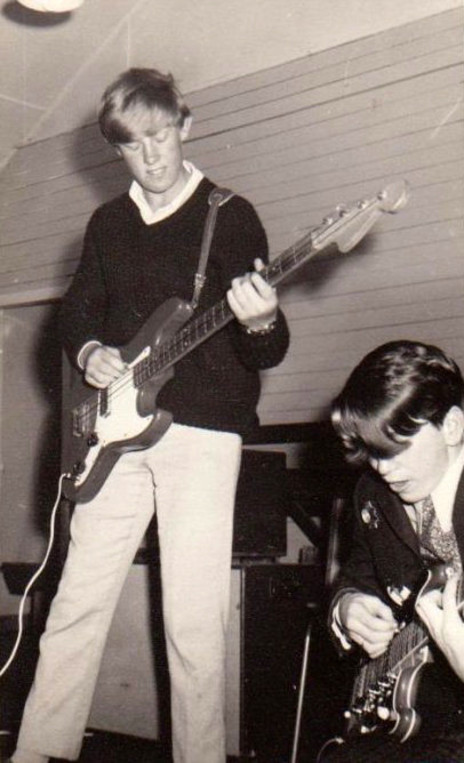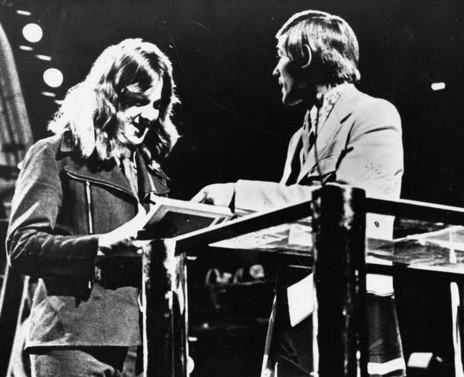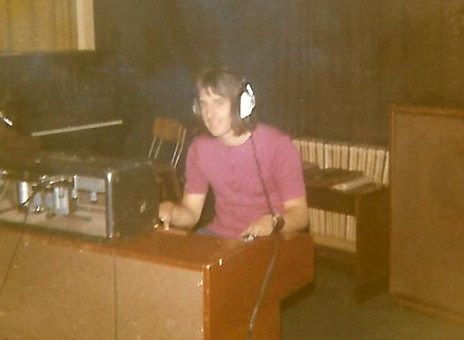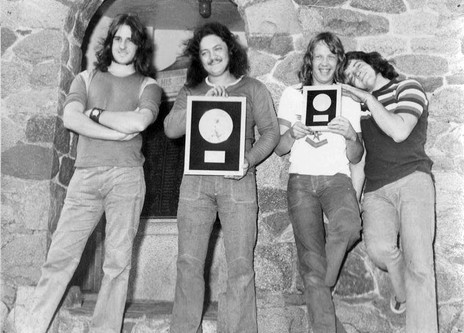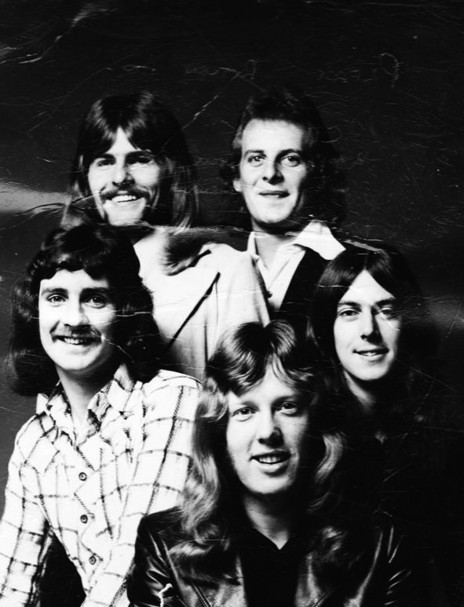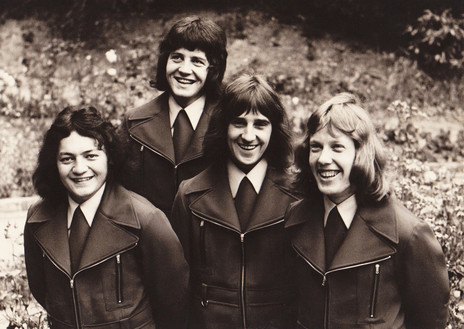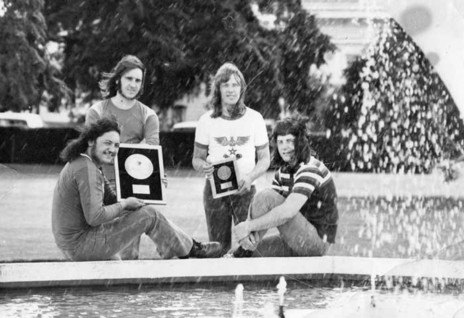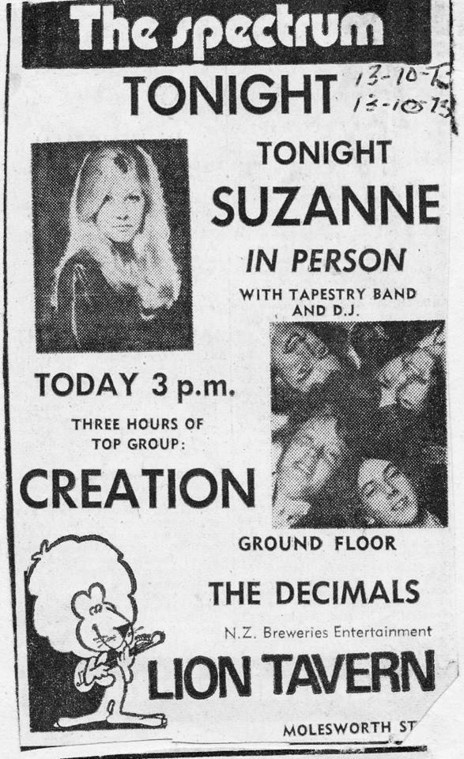On tour with British band The Peddlers, talk turned to Creation looking for songs and the visitors presented them with an uncredited cassette of the obscure ‘Carolina’, which they adapted as their own.
“We arranged it sort of like a mixture of Barry Ryan, Love Affair, all my influences, and we were playing it and using it as our sort of original song, I suppose,” Greg Christensen recalled. “It went down well and people could dance to it.
“We were dance bands in those days, not concert bands, so we learnt everything for dances. We played at 21sts, weddings, dances in the hall and that sort of thing; all your music was really based on dancing. The industry has since invented this word ‘covers’, but everybody was doing overseas songs.
“We had to come up with hits; we knew we had to come up with something original, but we really couldn’t write anything at that point that we thought was any good. We were trying to write songs, but we weren’t getting very far.”
The genesis of Creation dates to 1967 when Greg Christensen and Peter Leef met in a fourth form science class at Marlborough Boys’ College in Blenheim.
The line-up that had success with ‘Carolina’ split early in 1973 and Christensen assembled a new band that had an even bigger hit with ‘Tell Laura I Love Her’. When that song started climbing the charts in Australia the following year, Creation relocated there where a version of the band existed into the mid-1990s.
The genesis of Creation dates to 1967 when Greg Christensen and Peter Leef met in a fourth form science class at Marlborough Boys’ College in Blenheim. Not so interested in science they started singing together. Already a competent drummer, Leef was invited by older schoolmates Peter Matthews (lead guitar) and brothers John (organ) and Tony Roche (guitar) to join their band The Trolls as lead vocalist and drummer. He said he would if Christensen could tag along, so Christensen was told he would be the bass player.
They renamed themselves The Creation – the determiner would get dropped somewhere along the way – and began rehearsing two weeknights and nearly all day on Saturdays and Sundays in a small sleep-out at the Roches’ next-door neighbour’s home. The repertoire included The Who, The Rolling Stones and The Small Faces. They were unplaced in a talent quest and one of their first gigs was a freebie at the marching club of Tony Roche’s girlfriend. When word spread about the new band they started organising their own dances, sometimes drawing 300 teens.
Creation ventured as far as Nelson and Kaikoura and got very excited when a local promoter said he was bringing The Monkees to New Zealand and he wanted them to open, though it never happened. Peter Leef had gained the nickname Mr Dynamite and a music magazine report of the time included the curious statement that “His brother, Barry Leef, is in The Simple Image, but many people consider Peter to have more talent.” Just who the “many people” were wasn’t revealed.
Peter Leef and Christensen made a couple of visits to Barry in Wellington and had seen The Simple Image in action, and they had met some of the city’s other bands as well as the visiting Underdogs. They also knew Blenheim lad Wendell Hynes, who was working for Tom McDonald’s Universal Booking Agency.
Back home, Christensen was at odds with Creation’s direction and left to become the main vocalist in the raunchier Fire (aka St Elmo’s Fire) that included drummer John Rarity, organist Johnny Morris and guitarist Bill Martin. It meant he could leave the taffeta behind for black T-shirts and sunglasses.
Fire and Creation both benefited from the contacts of eccentric Blenheim impresario Harry Tootell.
Fire and Creation both benefited from the contacts of eccentric Blenheim impresario Harry Tootell. A musician of the 1950s, Tootell provided encouragement and opportunities for the fledgling bands of the time and was later immortalised in ‘Bang On Harry’ by The Fourmyula. Any touring band playing the Blenheim Town Hall would end up partying back at Tootell’s where the young Blenheim musicians would get to hang out with them.
Like his brother Barry before him, in 1969 Peter Leef took the well-beaten path to Wellington. He put in for a transfer with his employers Hannahs and was sent to Barefoot Originals in the capital. After about three months his Creation bandmates Tony Roche and Peter Matthews and Fire’s Rarity and Morris joined him and they re-formed Creation. Still only 16, Christensen was forbidden to make the trip by his parents.
Through the connection with Wendell Hynes, Creation came to the notice of Wellington promoter and musician Tom McDonald who told them UBA was interested in contracting them but only if they downsized to four members and he sent Leef packing; Matthews left in sympathy. Matthews joined Next Of Kin and Leef resurfaced a few months later as the singer in Sons & Lovers with guitarist Kemp Tuirirangi and organist Alan Moon.
Around the same time, Christensen had turned 17 in Blenheim and hightailed it to Wellington. He arrived as Creation were reeling from Leef and Matthews’s departure and as bass player Tony Roche was on his way out. Christensen, Rarity and Morris pulled in guitarist Phil Rakena and were booked by Tom McDonald to take over The Hi-Revving Tongues’ residency at Lower Hutt nightspot Aquarius.
Rakena didn’t last and the band approached Titahi Bay bass guitarist Glenn Timihou to take on the lead guitar. At a loose end since the demise of Spyce Of Lyfe with drummer Tom Swainson and guitarist Mike Farrell, Timihou relented when they said it would only be temporary until the band was well known enough for Christensen to become a classic frontman. Then Timihou could switch to his preferred bass and they could find a new guitarist, they told him. It never happened, but they were flat-out almost immediately.
McDonald was a relentless taskmaster and would have them sometimes doing three gigs a day in Wellington and working throughout New Zealand. He sold them The Dedikation’s van, which they later left on the side of the motorway when it broke down for the last time. After that he bought them a Zephyr Mk III and a trailer, which he then charged back to them.
While on tour with The Peddlers, Creation mentioned they were looking for songs to record. Peddlers singer and organist Roy Phillips offered up an unmarked recording of a soulful ballad called ‘Carolina’.
Unbeknownst to Creation, ‘Carolina’ had been released by Cockney soul singer James Royal on Carnaby in Great Britain and Capitol in the US in 1970 but had sunk without trace. Written by Italian songwriters Umberto Balsamo and Alberto Testa, former Twilights guitarist Terry Britten had written English lyrics. The Peddlers and James Royal shared the same producer, Mervyn Conn.
Having enjoyed success on record with his artists The Simple Image and The Dedikation, UBA’s Tom McDonald got Creation an audition with HMV, but the company didn’t like the band. Undeterred, he put them into HMV Studios to record an album nonetheless, booking an eight-hour session with engineer Frank Douglas, in which McDonald would produce and Brian Hands would serve as musical director.
The session nearly didn’t happen after an altercation about loading the organ into the van at a gig the night before which resulted in Johnny Morris giving his bandmate Glenn Timihou a black eye. All was smoothed over the following morning and the band launched into a series of songs selected mostly by McDonald.
Everyone in the studio’s ears pricked up when Creation unveiled their arrangement of ‘Carolina’.
“We did a whole album in eight hours,” Timihou laughed. “We were booked into HMV at nine o’clock in the morning and we left there at five. At lunchtime I walked down to the Duke of Edinburgh pub and I bumped into Dennis Mason from Quincy Conserve on the way down there. He said, ‘What are you doing?’ I said, ‘We’re just doing an album at HMV.’ He said, ‘Have you booked it for a week?’ I said, ‘A day,’ and he just shook his head!”
Everyone in the studio’s ears pricked up when Creation unveiled their arrangement of ‘Carolina’. They’d tightened the song up with Timihou playing suspended chords on guitar over the intro, taking it away from the piano-driven James Royal version. Gone were the awkward half bars leading in to each chorus and Christensen nailed a killer vocal. Once Brian Hands added strings and horns, ‘Carolina’ became top contender for a single.
McDonald released it on his own UBA label in May 1972. As the cassette provided by Roy Phillips had no details on it the writer was credited as unknown. Radio loved it and it was selected as a finalist in the Loxene Golden Disc.
“Then all of a sudden it just went mad,” Christensen said. “We were doing a lot more schools and lunchtime concerts and all that sort of thing and reaching a lot of other people that we probably didn’t know existed; a younger crowd maybe.”
In a prime example of McDonald’s punishing schedule, the night before the Loxene Golden Disc final in Christchurch in November, Creation were playing at the Onerahi in Whangarei. They finished at 10pm, loaded the Zephyr and trailer and drove through the night to Wellington to catch the ferry across Cook Strait.
When they eventually arrived in Christchurch they were put up in the same motel as good mates BLERTA, whose ‘Dance All Around The World’ on HMV was also a finalist. The rooms were full of BLERTA children, the occasional nudist and a generally uplifting atmosphere.
Other finalists included Headband’s ‘Good Morning Mr Rock’n’Roll’, Bunny Walters’ ‘Take The Money And Run’ and Quincy Conserve’s ‘Roundhouse’, but ‘Carolina’ gained the most public votes and won the prize and Creation took out the group title. The 1972 event would be the last Loxene Golden Disc presentation before the Recording Arts Talent Awards began the following year.
The next week was spent performing to adoring fans at one of the Timaru pubs. The publican loved having the country’s top band in his establishment and took them to the races in his Jaguar as well as serving them whitebait fritters for breakfast.
In the wake of the Golden Disc success, McDonald didn’t miss the chance to release the songs from the HMV sessions as UBA Presents Creation on Viking Records. Opening with ‘Carolina’, it also included Billy Preston’s ‘Everything’s Alright’ and The Beatles’ ‘Something’. The band’s belief in their own writing was reflected in the fact that Timihou’s ‘Why You Went Away’ and Christensen’s ‘Love Song To Rachel’ were buried in the middle of side two.
The constant travelling was getting to Creation. In an article in The Southland Times in January 1973, they estimated they’d driven 7,000 miles around the country since winning the Loxene Golden Disc. In the same article, Christensen said they had plenty more engagements in New Zealand, so “Why go to Australia and start from the bottom again?”
But just a few weeks later, the band broke up. Drummer John Rarity and organist Johnny Morris were dissatisfied with the way UBA were handling them and revealed they had plans to start a new outfit with their flatmate and original Creation singer Peter Leef. They hauled in yet another former Creation member, Peter Matthews, on guitar and another flatmate – ex-Wildwood bass guitarist Neil Mickleson – to form Prentice and hit the Lion Breweries circuit.
The demise of Creation was a relief for the disillusioned Glenn Timihou, who reverted to his preferred bass guitar and joined Dave Feehan in a revamped Tapestry. His one condition: he refused to work for Tom McDonald. “They were all out for their cut, but we were exploited,” Timihou remembered. “We worked our guts out and I just thought, ‘Oh, I’ve had this.’ I’d given it 18 months.”
For a crestfallen Greg Christensen it was a case of biding his time. He was of the opinion that greater opportunities were around the corner on the back of the Golden Disc win, and a chance encounter in Willis Street with former Tanglefoot and Stacey Grove drummer Mike Phillips culminated in a couple of beers and a plan to re-create Creation.
Phillips put the word out and Napier musicians Paul Jeffares (guitar) and John Maloney (organ) were drafted. Both had been part of 1972 Hawke’s Bay Battle of the Bands winner Fortress and were able to turn their hands to any musical style.
Not subscribing to his former bandmates’ misgivings regarding Tom McDonald, Christensen had Creation back with UBA and convinced McDonald they needed to record the new line-up. With McDonald producing and Brian Hands again as musical director, they remade the early 1960s pop song ‘Tell Laura I Love Her’, which peaked at No.3 on the national charts in September 1973. The flip side was Christensen’s ‘Blind Boy’.
“The big radio stations didn’t like it,” Christensen recalled. “They thought it was too commercial. But the provincials started playing it and of course the public loved it and it shot up the charts, and then they all started playing it. It’s one of those songs: either people like it or they don’t.”
‘Tell Laura I Love Her’ was released on the M and M label in the UK and on M7 in Australia. When it reached the top of the Sydney charts in August 1974, Creation nabbed bass guitarist Neil Mickleson from Christensen’s former cohorts in Prentice, pushed Christensen into a bona fide frontman role and crossed the Tasman.
What struck them from the start – aside from the agency picking them up at the airport in matching white Ford Fairlanes and the revelation that if you ordered spaghetti in a restaurant it didn’t come from a Wattie’s can – was the size of the venues and the boisterous Australian crowds, a stark contrast to the introverted, subdued audiences at home.
The next year or so was a continuous circuit of Sydney, Melbourne, Adelaide, Perth, Brisbane and Canberra.
The next year or so was a continuous circuit of Sydney, Melbourne, Adelaide, Perth, Brisbane and Canberra working alongside bands such as AC/DC, Renee Geyer’s Sanctuary and recent arrivals from New Zealand, Dragon. Their support at the Largs Pier in Adelaide on one occasion was new group Little River Band: “You’ve gotta come down and have a listen to this fucking band we’re following,” a wide-eyed Mike Phillips addressed Creation.
Things came unstuck during a four-week stay in Perth when they booked up $500 on food, drink and toll calls during the first week and their promoter, who was to have paid the bill, disappeared. They found cheaper accommodation, dismissed the roadie, got rid of the truck and began working the debt off in time to return to Sydney.
While Paul Jeffares, John Maloney and Neil Mickleson had all settled in the city and found girlfriends and flats, Phillips and the married Greg Christensen were growing ever more disenchanted and soon after opted to return to Wellington, effectively ending the band.
Mickleson successfully auditioned for Johnny Devlin & The Devils, but baulked when he discovered he had to purchase his own studded leather jacket for around $350. Instead he rang Jeffares and Maloney and they re-formed Creation with English drummer Roy Lawrence and singer and guitarist from Newcastle band Bogislav Tim Crozier. Crozier was recommended by and had played with recent Newcastle resident John Rarity, former Creation drummer.
They remained staples of the Sydney RSL circuit until around 1978 when Mickleson, Maloney and Crozier formed a nine-piece soul band called Skintight. The logistics of a unit of that size proved too much and after about a year Mickleson and Crozier started another version of Creation, becoming an in-demand backing band for the likes of Normie Rowe, Renee Geyer and Dalvanius & The Fascinations.
Mickleson left and returned to New Zealand in 1981 when he and his brother bought part of the family farm in Taihape after his father passed away. There he hooked up with Daggy & The Dickheads.
Tim Crozier kept Creation working in and around Sydney with a changing line-up until around 1995, making sure he always kept ‘Carolina’ and ‘Tell Laura I Love Her’ rehearsed up and at the ready in case of the not infrequent requests from nostalgic expat New Zealanders who had settled there.

